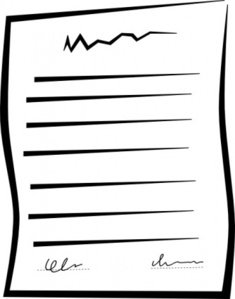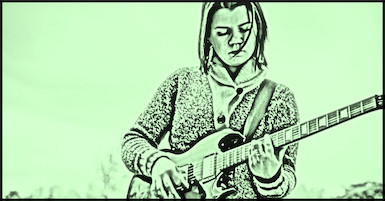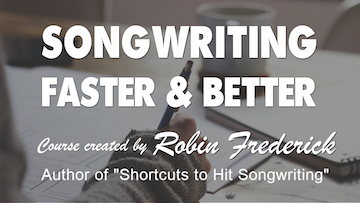I’ve been hearing a lot of great cover songs in TV series and commercials lately. Last week, The Handmaid’s Tale featured a spooky, electro cover of Fleetwood Mac’s “The Chain” by Kerala Dust. VRBO is re-airing a commercial with John Legend covering the Johnny Nash hit “I Can See Clearly Now.” An INXS cover version of “Never Tear Us Apart”—a hit for both Tom Jones and Joe Cocker—is currently being used in a long-form commercial for Michael Hill Jewelry. And recently NCIS: Hawai’i used Kina Grannis’ great guitar/vocal cover of “Shut Up and Dance” originally by Walk the Moon.
Cover songs are giving old favorites a new life and new, indie artists added traction!
WHAT IS A COVER SONG?
Covering a song means recording or performing a pre-existing song, usually one made famous by somebody else. There are covers of songs ranging from American Standards like “Summertime” and “Over the Rainbow” to more recent hits like Radiohead’s “Creep” and Passenger’s “Let Her Go.”
While you could cover songs that are obscure or even completely unknown, you’ll miss out on the audience appeal and name recognition that comes with a big hit. The large audience of people who have heard the original song and liked it might also be interested in hearing your interpretation of the song. That interpretation can sound similar to the original version or it can be very different, as you’ll see.
HOW COVER SONGS CAN HELP YOU
“So,” I hear you saying, “I didn’t write the song and I won’t earn any song royalties from it. So why should I record a cover song?” I’m glad you asked.
#1. Cover songs are increasingly popular in the Film & TV market. You’ll hear cover songs in commercials, TV shows, and movies. Music supervisors are actively searching for them. So much so that a top music library like Crucial Music is now accepting cover songs. Although you won’t earn any song royalties, you will receive the portion of the sync fee that is paid for the use of the sound recording.
#2. Listeners like cover songs.
For many indie artists who are growing their fan base, cover songs deliver a substantial share of their Spotify and YouTube streams. Artists like Nilu (“How to Save a Life”), Welshly Arms (“Hold On, I’m Coming”), Molly Parden (“Landslide”), William Fitzsimmons (“I Kissed a Girl”), Daniela Andrade (“Crazy” “La Vie En Rose”), and Bootstraps (“Stand By Me”) all have covers with healthy numbers of listens compared to their other songs on Spotify.
Sure, sometimes listeners prefer the original version, but whether they land on your Spotify artist page by accident or intentionally, you get noticed. And if they like what they hear they’ll be back.
IMITATION VS. INTERPRETATION
Some artists cover a song in a style that’s very close to the original hit song. But the Film & TV market is often looking for more unique, interpretive covers. The appeal for the listener lies in discovering a new way to hear a song, almost as if it’s a completely new song.
For example, the original 1982 version of “Mad World” by Tears for Fears—which was a huge radio hit and is still played on oldies stations today—expressed the singer’s anger and frustration with an arbitrary world. By Verse 2, the production almost buries the singer under a cacophony of drums and dissonant riffs.
When the song was covered by Michael Andrews and Gary Jules for the soundtrack of the film Donnie Darko in 2003, it was slowed down and given a dark, stripped-down production that conveyed a melancholy resignation. Suddenly the song took on a deeper meaning and more emotional gravity. This is what a successful song interpretation can do.
MOST POPULAR WAYS TO INTERPRET A SONG
STRIP IT DOWN AND SLOW IT DOWN
In the example of “Mad World,” the cover version was essentially a bare bones arrangement of the original at a slower tempo.This is perhaps the most popular way to re-interpret cover songs.
There are plenty of examples of this approach. Here’s one that was used successfully on a song everybody knows, “Every Breath You Take” by The Police. It was a huge radio hit and has well over a billion listens on Spotify. So what can you do that’s different that listeners might like? For the cover version, Aaron Krause and Liza Anne changed the vibe by emphasizing the fragility and pathos that lurk at the heart of that song. This cover version has 84 million listens on Spotify and was used on Dancing With the Stars, so obviously plenty of listeners like it.
CHANGE THE GENRE
You can make some really creative choices here. Change a traditional Christmas song into a Bob Marley Reggae tune or a 1980s New Wave hit into an Adele-style ballad. Just be sure your cover version gives the listener an authentic experience. Don’t do it just because it’s different.
“Sea of Love” from 1950s R&B to Folk.
The 1959 doo-wop hit “Sea of Love” by Phil Phillips & the Twilights is a classic. But leave it to Cat Power to do something really unusual with it. A folksy, out-of-tune autoharp and vocal are just the thing! Who knew? It was successfully used in the film Juno and in TV series 90210, The Pursuit of Love, Pretty Little Liars, Ray Donovan, and more.
You can hear the following cover songs wherever you stream music.
“Nothing Else Matters” from Rock to… Belgian Girls Choir.
The Metallica Rock hit “Nothing Else Matters” was given a makeover by Scala, a Belgian girls choir, who turned it into a haunting chant. Their cover of Radiohead’s “Creep” has been used in multiple TV shows and movies.
“Blue on Black” from Blues/Rock ballad to Mainstream Rock.
When Blues singer-songwriter Kenny Wayne Shepherd’s “Blue on Black” was covered by Rock band Five Finger Death Punch this dark, catchy, mid-tempo ballad appeared to be headed in a direction similar to the original. But this cover grows into a powerful Rock anthem with a dangerous edge as the song progresses.
GOT A SIGNATURE VOCAL STYLE? USE IT
Singers with an identifiable or unusual vocal sound can give any song a distinctive twist just by singing it. Joe Cocker’s version of “With a Little Help From My Friends” (The Beatles) or Johnny Cash’s cover of “Hurt” (Nine-Inch Nails) give these songs an entirely new intensity.
I’m not saying the cover version is better or worse than the original, but both of these cover versions stand as viable interpretations and both can be appreciated by listeners in a new light.
CHANGE THE POINT OF VIEW
The Smashing Pumpkins’ cover of Fleetwood Mac’s “Landslide” gave a nod to the original by using a similar guitar fingerpicking style, but the point of view has shifted from female to male and Billy Corgan’s distinctive vocal sound is more aggressive, almost angry, when confronted with life’s harsh lessons.
Katy Perry’s debut single “I Kissed a Girl” is a dance-able, sugar-sweet Pop confection that stormed the charts. But when singer-songwriter William Fitzsimmons sings it, the male vocal changes the listener’s perception of the story. Listen to this cover yourself and see what you think.


YOU’LL NEED TO LICENSE THE SONG
To record and release a cover song legally you’ll need to sign a Mechanical License Agreement. You’ll be asked to estimate how many sales you think you’ll have and then pay for that number of sales up front.
The Harry Fox Agency / Songfile.com
For many years the only way to license a song for release in the U.S. was through the Harry Fox Agency. You can still do that through Harry Fox by using their Songfile.com database. Look up the song you want—any song that has been a hit is listed with Harry Fox—and then follow the directions.
EasySong.com
You can get your initial cost down by estimating a lower number of sales (100, 200, 300) at EasySong.com. Check out their website for more on how to do it. They can help you clear your song for international distribution through their Custom Licensing service.
If you have questions, don’t hesitate to call or contact the Help desk at either HarryFox/Songfile or EasySong. Better to find out ahead of time than discover a problem after you’ve recorded your song.
UNDERSTAND THE RIGHTS YOU HAVE
A Mechanical License is a legal agreement. Be sure you read it carefully and understand what you can legally do with your cover song.

YOU ARE THE OWNER OF THE SOUND RECORDING: Since you’re paying for the recording (or recording it yourself) you are the owner of the sound recording. But as far as the song itself, you only have the right to record and release that sound recording. If someone wants to sync your recording to picture, you can give them permission to use the sound recording (the Master) but they will still have to license the song from the copyright owner or administrator.
This is why music libraries have previously stayed away from cover songs. They’re not one stop. The end user has to get two different licenses—one for the sound recording (from you) and another for the song (from the music publisher or copyright owner). Both have to agree to the licensing deal. If either objects then there’s no deal.
YOU CANNOT CHANGE THE LYRICS WITHOUT PERMISSION
Licensing a song to record a cover version does not give you the right to change any of the lyrics. If you want to do that, you’ll need to contact the publisher and get permission. Even with the publisher’s permission, the original songwriter might not be happy with a lyric change. To stay on everybody’s good (and legal) side, don’t change the lyrics in your cover version. Period.
You can change the chords. But be sure to keep enough of the original melody so your listeners recognize the hit song. To hear a good example of a cover version that changes the chords and melody without changing the lyrics, listen to Cat Power’s version of the Rolling Stones hit “Satisfaction.”
TRY IT NOW
Listen to some of the covers mentioned here. Then try a couple of cover versions yourself. Be sure to pick a song that’s familiar to a large audience. Interpret it in a way that adds new insight or a different way of hearing the song.


